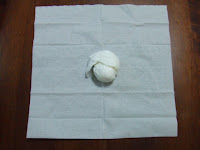What do you do when you have a cold? Some go to doctors or pharmacies for medicine. Others eat nutritious meal and take plenty of rest. Of course these are the main measures for a cold.
On the other hand, there are some folk remedies for it. In Japan it is said hot lemonade or hot kudzu drink with ginger is good. Tamagozake (Japanese sake mixed with egg and sugar) also works on adults. For sore throat, white radish drink will ease your pain. Here is a recipe for this drink.
1. Cube the white radish and put them into the jar or bottle.


On the other hand, there are some folk remedies for it. In Japan it is said hot lemonade or hot kudzu drink with ginger is good. Tamagozake (Japanese sake mixed with egg and sugar) also works on adults. For sore throat, white radish drink will ease your pain. Here is a recipe for this drink.
1. Cube the white radish and put them into the jar or bottle.

2. Add some honey up to covering the radish.

4. Drink the liquid as it is. Add hot water if desired.
What are folk remedies in your country?
What are folk remedies in your country?











